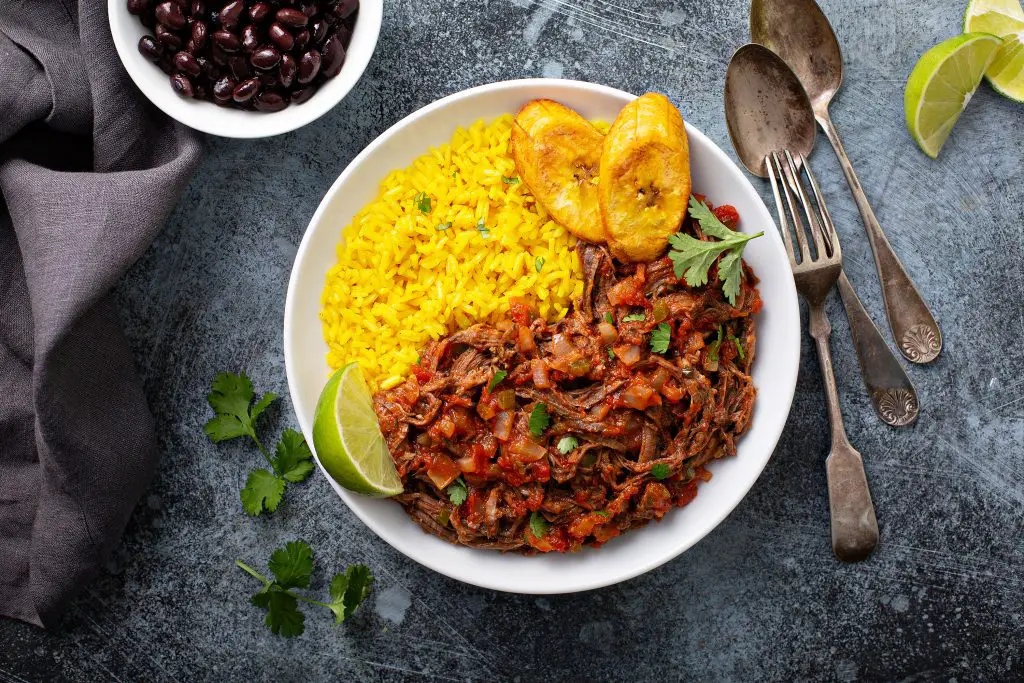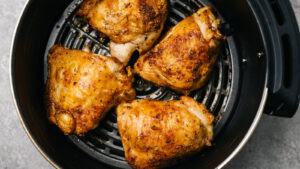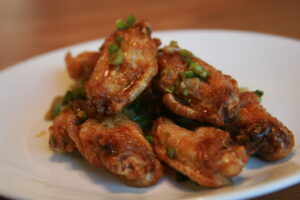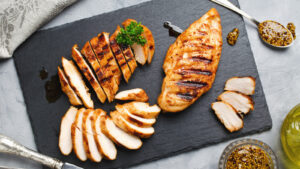Cuban cuisine is a vibrant mix of Spanish, African, and Caribbean flavors, reflecting the island’s rich cultural heritage. Among the many delicious dishes that Cuba has to offer, “Ropa Vieja” holds a special place as arguably the most popular and beloved dish in Cuban cuisine.
Ropa Vieja: The Heart of Cuban Cuisine
Ropa Vieja, which literally translates to “old clothes,” is a flavorful stew made of shredded beef, tomatoes, onions, bell peppers, and a mix of spices. The dish gets its name from the shredded meat’s resemblance to a pile of torn, old clothes. Despite its humble name, Ropa Vieja is rich in flavor and history. It is said to have originated from the Canary Islands, the place of origin for many Cuban immigrants.
Ingredients and Preparation
The base of Ropa Vieja is flank steak, a cut that’s known for its fibers that easily fall apart when cooked for long periods. The meat is initially cooked in water with bay leaves, salt, and pepper until tender. After being shredded, it is then sautéed with onions, garlic, bell peppers, and tomatoes. A splash of white wine, cumin, and oregano adds depth and complexity to the dish. The result is a tender, juicy meat dish that is both comforting and satisfying, served with white rice and sometimes accompanied by fried plantains, black beans, or yuca.

Cultural Significance
Ropa Vieja is more than just a meal; it is a symbol of Cuban identity and resilience. Its origins trace back to a time when food was scarce, and families had to make do with what they had, transforming simple ingredients into something extraordinary. Today, it represents the creativity and enduring spirit of the Cuban people.
Beyond Ropa Vieja
While Ropa Vieja may hold the crown, Cuban cuisine is diverse and includes other notable dishes such as “Lechón asado” (roasted pork), “Arroz con pollo” (chicken with rice), and “Picadillo” (a ground beef dish). Each of these dishes tells a story of cultural fusion and culinary innovation.
A Global Ambassador
In recent years, Cuban cuisine has gained international recognition, with Ropa Vieja at the forefront. Restaurants around the world serve this dish, offering a taste of Cuban culture to those thousands of miles away. It’s a testament to the universal appeal of Cuban food and its ability to connect people through the power of flavor.
While it’s challenging to pin down a single dish that represents the entirety of Cuban cuisine, Ropa Vieja’s popularity, rich history, and cultural significance make it a strong contender for the title. It’s a dish that embodies the essence of Cuba—its history, its struggles, and its vibrant culture—making it a true culinary treasure.
The Global Influence of Cuban Cuisine
The popularity of Ropa Vieja and Cuban cuisine, in general, extends far beyond the island’s shores, reflecting a growing global appetite for diverse culinary experiences. Cuban restaurants in cities across the world serve as cultural ambassadors, introducing diners to the island’s rich flavors and cooking traditions. This global presence not only showcases the versatility and appeal of Cuban dishes but also fosters a deeper appreciation for the country’s culinary heritage.
Cuban Cuisine: A Reflection of Its People
At the heart of Cuban cuisine is a story of resilience and innovation. The island’s history of colonialism, trade, and migration has contributed to a unique culinary tapestry. Dishes like Ropa Vieja, with their simple yet flavorful ingredients, reflect the Cuban people’s ability to create vibrant and delicious meals under varying circumstances. This creativity is a testament to the island’s spirit, one that celebrates life’s pleasures amidst challenges.
Modern Interpretations and Innovations
Chefs within Cuba and in the diaspora continue to experiment with traditional recipes, introducing modern twists that respect the past while embracing contemporary tastes. These innovations include vegetarian versions of Ropa Vieja, using jackfruit or lentils as substitutes for beef, and incorporating new ingredients into classic dishes. Such culinary creativity ensures that Cuban cuisine remains relevant and exciting, appealing to a broad range of palates.

The Social Aspect of Cuban Dining
In Cuba, meals are more than just food; they’re an experience shared with family and friends. Dishes like Ropa Vieja are often served at gatherings, underscoring the communal aspect of dining. This tradition of sharing meals fosters a sense of community and belonging, reinforcing the cultural importance of food in Cuban society.
Cuban Cuisine on the Global Stage
As Cuban cuisine continues to gain popularity worldwide, it plays a crucial role in promoting cultural exchange and understanding. Food festivals, culinary tours, and international collaborations highlight the richness of Cuban flavors, inviting people from different backgrounds to explore and celebrate the island’s culinary heritage. Through these experiences, Cuban cuisine transcends borders, becoming a universal language of hospitality and warmth.
Cuban cuisine, with Ropa Vieja leading the charge, is a vibrant mosaic of flavors, stories, and traditions. Its popularity both in Cuba and around the world underscores the universal appeal of food that is made with heart and soul. As Cuban dishes continue to captivate taste buds globally, they remind us of the power of cuisine to connect, inspire, and tell the stories of a people. In celebrating Cuban food, we celebrate the resilience, creativity, and communal spirit of the Cuban people, making it a cherished part of global culinary culture.
FAQ: Cuban Cuisine
What is Cuban cuisine known for?
Cuban cuisine is known for its rich flavors, combining Spanish, African, and Caribbean influences. It features a variety of meats, particularly pork and beef, cooked with spices and ingredients like garlic, onion, bell peppers, and tomatoes. Dishes are often accompanied by rice, beans, and plantains, creating hearty and satisfying meals.
Ropa Vieja is considered Cuba’s national dish because it embodies the island’s culinary traditions and history. Its origins, dating back to the Canary Islands, and its evolution into a beloved staple reflect Cuba’s cultural melting pot. The dish’s ability to turn simple ingredients into a flavorful and comforting meal symbolizes the resilience and creativity of the Cuban people.
Can Ropa Vieja be made vegetarian or vegan?
Yes, modern interpretations of Ropa Vieja have introduced vegetarian and vegan versions, using jackfruit, lentils, or other meat substitutes. These versions mimic the texture of shredded beef and are seasoned with traditional spices to capture the essence of the original dish.
What are some must-try Cuban dishes besides Ropa Vieja?
Besides Ropa Vieja, must-try Cuban dishes include:
Lechón asado: Roasted pork marinated in mojo, a sauce made with garlic, sour orange, and spices.
Arroz con pollo: A comforting dish of chicken and rice cooked with saffron and vegetables.
Picadillo: Ground beef cooked with tomatoes, olives, raisins, and spices, often served with rice.
Tostones: Twice-fried green plantains, crispy and perfect for dipping.
Yuca con mojo: Boiled yuca (cassava) topped with a garlic-citrus sauce.
How has Cuban cuisine influenced food in other countries?
Cuban cuisine has influenced food in other countries, especially in the United States, where Cuban immigrants have introduced their culinary traditions. Cities like Miami and Tampa have vibrant Cuban communities, where Cuban sandwiches, cafecito, and pastelitos have become part of the local food scene. Cuban cuisine’s global influence is also seen in the fusion of Cuban flavors with other culinary traditions, creating innovative and delicious dishes.
Is Cuban food spicy?
Cuban food is flavorful but not typically spicy in terms of heat. It relies on a blend of spices like cumin, oregano, and bay leaves, along with garlic, onion, and bell peppers (known as the “sofrito”) to build
A typical Cuban breakfast might include café con leche (strong coffee with milk) paired with tostadas (buttered and toasted Cuban bread). Sweet pastries such as guava pastelitos (guava pastries) are also popular breakfast items.
How do Cubans celebrate special occasions with food?
Food plays a central role in Cuban celebrations, with dishes like lechón asado (roast pork) and arroz congrí (rice with black beans) often served during holidays and special occasions. These gatherings are not only a feast for the taste buds but also a time for families to come together and enjoy each other’s company.
Where can I experience authentic Cuban cuisine outside of Cuba?
Authentic Cuban cuisine can be experienced in many cities around the world, particularly in places with significant Cuban immigrant populations, such as Miami, New York, and Los Angeles in the United States. Many European and Latin American cities also have Cuban restaurants that offer traditional dishes.
How has Cuban cuisine evolved in recent years?
In recent years, Cuban cuisine has evolved with the introduction of new ingredients and cooking techniques, reflecting both global trends and local innovations. Chefs in Cuba and abroad are reimagining traditional dishes, making them more accessible to health-conscious and environmentally aware consumers, while still preserving the essence of Cuban culinary traditions.
These FAQs offer a glimpse into the rich and diverse world of Cuban cuisine, highlighting its history, flavors, and the ways in which it continues to evolve and inspire food lovers around the globe.




